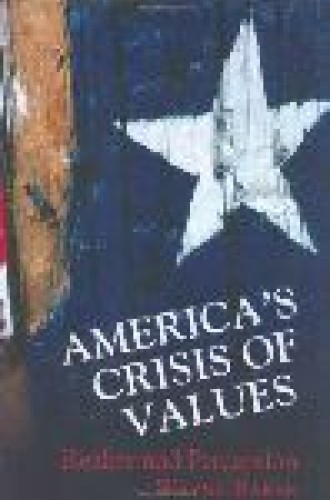Widow's walk
Among the inside-the-beltway commentariat, it goes without saying—although the commentators frequently say it anyway—that the United States is in the midst of a culture war. But Wayne Baker, who teaches management and sociology at the University of Michigan, joins others, including Princeton’s Paul DiMaggio and Stanford’s Morris Fiorina, in arguing that the culture war is largely a myth.
When social scientists examine the distribution of American opinions on a wide variety of issues, including “hot button” ones such as abortion and gay marriage, they are invariably impressed by how moderate the views tend to be. On abortion, for example, very few Americans favor either abortion on demand or an unconditional ban on the procedure; to the degree that widespread disagreement exists at all, it is over whether parental permission ought
to be required or whether certain procedures, such as partial-birth abortion, as its opponents call it, should be made illegal.
Baker’s book makes a significant contribution to our understanding of American opinion. It is not quite the definitive study he proclaims it to be; Morris Fiorina’s Culture War: The Myth of a Polarized America, published shortly before America’s Crisis of Values, is just as important. But Baker adds new data and offers new analyses that cannot be overlooked.
Relying upon the World Values Surveys, which enable scholars to examine public opinion in a variety of countries, Baker puts the U.S. in comparative perspective on this question—which no other scholar has done. In a fascinating analysis, he shows that the U.S. truly is exceptional. Like Canada and the societies of Western Europe, we value self-expression and individualism. But unlike them—indeed, more like Brazil or Turkey—we also favor traditional values over secular and rational ones. What many perceive as the two sides of the American culture war might more properly be interpreted as the twin poles of cultural experience that have characterized us since the time Americans expressed their freedom by moving west—and then immediately indicated their adherence to tradition by planting churches.
There is another way to evaluate the salience of the culture war: instead of comparing the U.S. to other countries, we can contrast America now to the way it used to be. Here Baker is limited by the fact that the World Values Survey has been in existence for only 20 years. Still, data from the past two decades do allow for some conclusions, and the one Baker demonstrates most convincingly is that no significant increase in political polarization has taken place over that period. (Fiorina’s data point to much the same conclusion.) Baker did find that “absolutists” are more likely to attend church, while “relativists” typically get more involved in politics. (Whether this difference will continue as evangelicals become more politically engaged cannot be answered using Baker’s historical data.) But those whose opinions tend to be relativistic share the same culture as those whose opinions are more absolutist, and both are influenced by the same historical trends. Americans may disagree—in a democracy, they are expected to—but even without historical survey data it is possible to conclude that their disagreements do not even begin to approach the level of those of the Civil War era—or even of the very polarized 1960s.
Baker tries to explain why a gap has opened between the public perception that the U.S. is sharply divided and the empirical reality that it is not. Here his views are more speculative and not as persuasive. For example, he cites the distinction between “birthright” nations that are based on a common ethnicity and “ideological” ones, such as the U.S., that are linked together by a common creed. “Since the foundation of national identity is ideological,” he writes of the U.S., “there is a profound need to preserve the traditional values that compose and support it.” But this makes little sense. Birthright nations, which have their origins in traditional communities, ought to look backward, while ideological ones ought to look forward. American exceptionalism remains a mystery after all of Baker’s data are absorbed and explanations considered.
Although often technical in its presentation of data, America’s Crisis of Values is an important book that ought to be included in any seminar designed to provide background reading for our elected politicians. Many commentators believe that in the wake of hurricanes Katrina and Rita, we are about to enter a less ideological time, during which the American public will focus less on the values that divide us and more on the need for competent leadership that can unite us. If so, Wayne Baker’s book, along with a few others, will have provided an important public service. Too many of us have for too long persuaded ourselves that there are enemies within. It is time for our perceptions to line up with the reality of the more moderate and consensual country in which we actually live.






